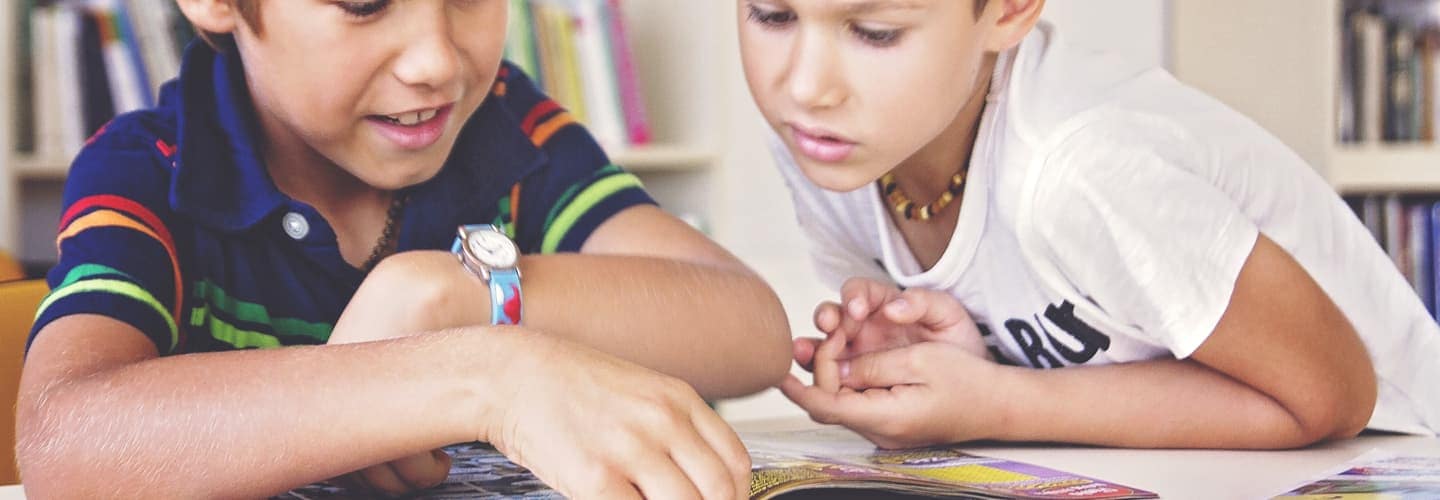
- Language teaching
- Teaching trends and techniques
4 top tips to help you encourage teens to read
Two big questions about reading
Children who engage with reading are three times more likely to have high levels of mental well-being than those who do not - (National Literacy Trust).
There are two big questions we need to consider to help our students succeed in today’s school environment and to improve their general well-being.
- How can we help our teenagers develop literacy and reading skills to be able to understand 21st century texts and modern communication?
- How can we get reluctant readers to enjoy reading and become lifelong readers?
Research points in one direction: that is reading for pleasure! Here are four tips to help your students read more - and enjoy it.
Tip 1: Give them a choice of great graded reader
Reading can help students escape into new worlds and switch off from the day, helping them cope with stress and worry. The outcomes of reading will occur more often and more strongly if reading is enjoyable in the first instance.
The benefits of reading are more likely to be felt when reading takes place through free choice. Give your students a wide selection of graded readers of different genres and at the right level. Ask them what genres they know and then do a class survey to find out which they like reading most.
Pearson English Graded Readers offer teenagers a large range of genres at all levels. The series offers world-renowned stories – fiction, non-fiction, biographies, cinematic readers, plays, short stories and classics – rewritten for English learners.
Tip 2: Involve the students in a collaborative group activity
A reading circle is a strategy where the teacher puts students into groups to read a whole book or one or more chapters. At the end of the project, each group creates a presentation to deliver to the class. Reading circles reinforce listening, speaking, reading and writing skills in a supportive and collaborative environment.
What’s more, they encourage students to deepen their understanding of a chosen text, as students are encouraged to talk about the book they are reading with their classmates. They discuss plots, the specific language used, and personal experiences, think about the characters and make connections to the outside world and citizenship.
Students work collaboratively and think about and discuss what they have read. At the same time, they are guided towards deeper comprehension and are encouraged through active learning to take an interest in other students’ ideas.
This type of collaborative project works perfectly in a face-to-face or remote teaching situation. It can be a way of nudging reluctant readers to read. You can help your students deepen discussions about books, create lifelong readers and build a respectful classroom community.
How to lead a reading circle
Create your reading circles by forming groups of four to seven students. Learners should be at the same reading level and also have similar interests, where possible.
The objective of each circle is to read the book and prepare a presentation to share with the whole class. Each group decides collaboratively which reader they would like to read together; however, ask each group to read a different book so you have a variety of presentations.
Reading circles should be fully student led. Students are empowered and supported by their peers as they all have a specific and important role to play. Through the project and preparing the digital responses students learn digital skills and improve their digital literacy and critical thinking.
Suggested reading circle roles:
- Slides Wizard: Creates the slides for the presentation
- Presentation Wizard: Helps with the presentation to the class
- Artistic Wizard: Looks at the illustrations in the book (this could be good for students with dyslexia)
- Film Wizard: Finds information about the film version if there is one
- Word Wizard: Finds new or keywords
- Summary Wizard: Writes/creates a summary/visual summary of the plot
- Sentence Wizard: Finds important quotations, and sentences in the book
- Character Wizard: List/description of characters
- Places in the book Wizard: Finding out about symbolic locations in the book
Students can present their reading circles project in several different ways. For example:
- A PowerPoint presentation
- A poster
- A video
- A Padlet (interactive notice board where they can post comments, files, pictures and audio and video recordings).
While students are watching the presentations, they should give feedback to the groups presenting using a feedback form, giving praise and suggesting areas of improvement.
Tip 3: Introduce your students to a class library
Introduce a class library and engage students in reading during class time or outside the classroom. If you don’t have much space for physical books, eLibraries can also ensure students can read the books remotely and read the same book at the same time! As with the printed versions, there are readers for teenage and adult students who want to supplement standard English course materials and build their English competence.
At the end of the year, students can organize a reading festival (either face-to-face or virtually) where they showcase their responses to reading e.g. videos, posters, lap books, dances…anything they like!
Tip 4: Help struggling readers build their confidence
Offering students a choice of readers at the right or slightly below their level can help boost their confidence. Ideally, guide them towards short stories so they can finish them.
Audiobooks can be an alternative to reading a book for a student with dyslexia (and other SEN students). They can have the same experience and many of the same benefits from listening to the story in English.
If they are reading it is important to scaffold their reading with pre-reading activities as they provide the necessary support before the reading starts and activate their background knowledge. It is also important to pre-teach vocabulary items and encourage them to predict what will happen in the story. Pair students up with a reading buddy so the student with dyslexia has another student who can help them.







